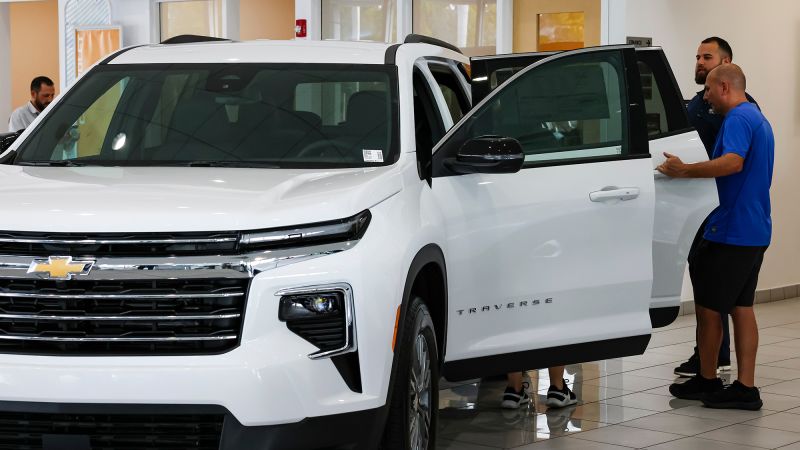When President Donald Trump’s auto tariffs were implemented in April, American car buyers anticipated significant price increases. However, the reality has been different as prices have remained relatively stable.
Industry experts warn that this trend may not last if the tariffs persist. They suggest that consumers might want to consider purchasing a vehicle soon before prices begin to climb in the coming months. Ivan Drury, director of insights at Edmunds.com, stated, “So far there’s a mismatch between the expectation of what would happen, and the reality of what has happened with prices. But I still think we’re still going to see prices start to take off in two to three months.”
Despite the imposition of 25% tariffs on imported cars and auto parts, the average price of new vehicles actually fell by 0.2% in May compared to April, and only rose by 2.5% since the pre-tariff levels in March. This decline is corroborated by the government’s consumer price index, which indicated a dip in both new and used car prices after seasonal adjustments.
Several factors contribute to this price stability. Concerns regarding tariff implications led to a decrease in buyer activity during April and May. Consequently, reduced demand has hindered dealers’ ability to elevate prices. Experts suggest a cautious approach among auto manufacturers regarding significant price hikes, especially to avoid upsetting the Trump administration.
Most vehicles sold since the tariffs were enacted were imported or produced prior to the tariff’s effect, according to Drury, who remarked, “The impact is not there yet.”
In March, dealerships had an inventory supply ranging from 30 to 77 days based on the manufacturer, as reported by Edmunds. Additionally, many potential buyers turned to purchasing cars earlier in March to beat the tariffs, creating an uptick in first-quarter sales but causing a slowdown in demand afterwards. Economic uncertainties, job security concerns, and high interest rates also play roles in consumers’ hesitation over large purchases.
While Edmunds has not released a forecast for second-quarter sales, Drury believes there is a strong possibility of either reduced sales or negligible changes compared to last year. However, he noted that stable prices could eventually attract consumers back to the car market later this year. The Conference Board’s May report indicated that 12.1% of American consumers were considering a new car purchase in the next six months, up from 10.6% in April, signaling a return toward normal buying interest.
As customers reenter the market, they may encounter creeping prices. The tariffs affect every major automaker, with the exception of Tesla, as most companies import vehicles into the U.S., comprising 46% of auto sales in 2024, according to S&P Global Mobility. Even domestically manufactured vehicles often utilize imported components.
Some automakers have begun quietly increasing costs through additional fees and by scaling back incentives offered to buyers. However, as vehicles subjected to tariffs start to fill dealer inventories, experts predict the eventual passing on of these costs to consumers.
Car prices arise from negotiations between dealers and customers, yet manufacturers set the manufacturers’ suggested retail price (MSRP). Adam Jonas, an auto analyst at Bank of America, anticipates that manufacturers will likely raise the MSRP later this year as the 2026 model year cars are delivered. “We’re hearing price hike announcements slowly,” Jonas noted during a recent conference. “I think with the changeover to 2026 models, that will be the opportunity for companies to raise prices on new vehicles so they don’t enrage certain folks that might come down on them for raising prices.”
Until that time, manufacturers appear willing to absorb some tariff-related costs, which is partly due to diminished consumer demand and also a strategy to avoid conflict with the Trump administration. Drury remarked that when automakers do eventually implement price increases, they will likely avoid directly linking those hikes to the tariffs, understanding that such associations could lead to backlash: “I think they’ve learned there’s nothing good that comes from doing that.”

